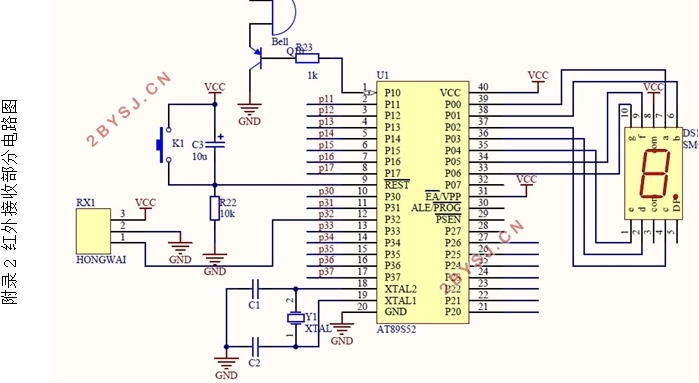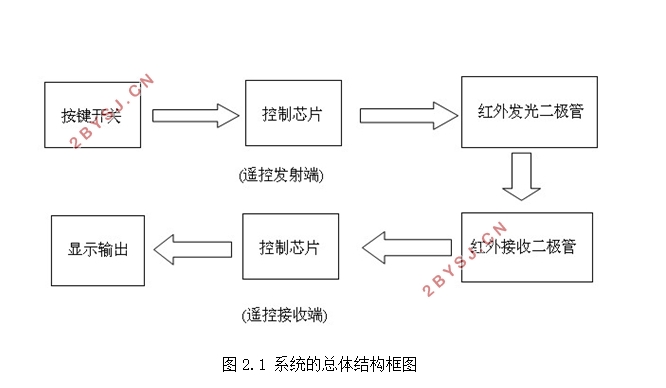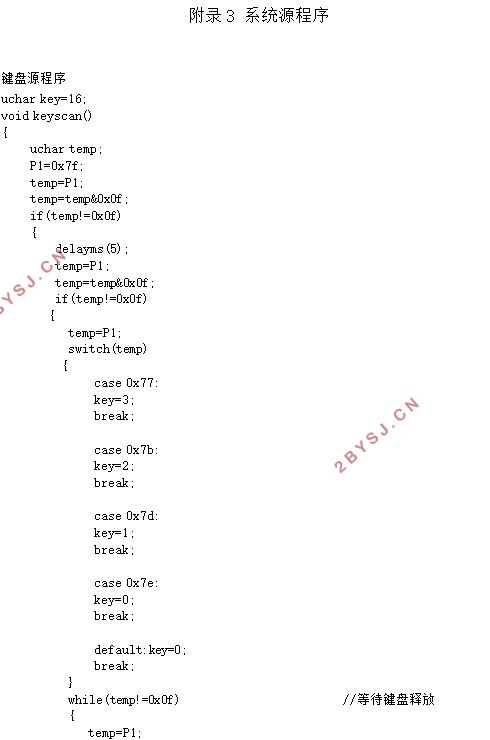基于单片机的红外遥控开关控制器的设计
无需注册登录,支付后按照提示操作即可获取该资料.
基于单片机的红外遥控开关控制器的设计(任务书,开题报告,论文13000字)
摘 要
本次设计的红外遥控开关控制器,是利用红外遥控技术通过开关控制器来控制电路的通断。在红外发射部分按下某一按键,红外接收部分上与其对应的电路会接通,相对应的led灯会显示,同时数码管上会显示该按键对应的数字或字母。
文章第一部分是对系统的概况,包括背景意义及分类等等。第二部分主要介绍了系统硬件方面的内容,叙述了设计要求和设计思路,随后对整个硬件电路进行分析,包括主要的处理模块以及输入模块,显示模块,声音模块等外围电路。第三部分主要从系统软件方面介绍了主程序的设计以及软件的流程图。最后一部分是系统调试,主要介绍了总体的设计过程,调试工作以及完成的硬件实物图。
关键字:单片机 AT89S52 红外遥控
The infrared remote switch controller based on single-chip
Abstract
The article talks about the design of infrared remote switch controller. This switch controller uses the technology of infrared remote to control the state of the circuit whether its on or off .Press a button in infrared launching part, the remote infrared receiving part will show the corresponding to the led lights’ display, at the same time, digital tube will display the corresponding to the buttons’numbers.
The first part is the overview of the system, including the background, significance and classification and so on. The second part mainly introduces the hardware system , it describes the design of requirements and ideas, then it analyzes the whole hardware circuit, including the main processing module and input module, display module, voice module and peripheral circuit. The third part mainly from the aspects of system software introduces the main program design and flow chart of the software. Last part is the system debugging, and mainly introduces the overall design process, the debugging work, and completed the hardware physical figure.
Key words: Micro-controller; AT89S52; infrared remote




目 录
摘 要........................................................................I
ABSTRACT.................................................................II
第一章 引言...................................................................1
1.1 开关控制器的意义........................................................5
1.2 开关控制器的背景与分类..................................................5
1.3 系统所做工作............................................................7
第二章 硬件电路的设计......................................................8
2.1 系统整体方案............................................................8
2.1.1 系统功能概述 .....................................................8
2.1.2 系统设计要求及思路 ...............................................8
2.2 红外发射部分 ...........................................................9
2.2.1 输入模块..........................................................9
2.2.2 处理模块 ........................................................11
2.2.3 发射模块.........................................................16
2.3 红外接收部分...........................................................17
2.3.1 信号接收模块.....................................................17
2.3.2 处理模块.........................................................18
2.3.3 显示模块.........................................................19
2.2.4 发声模块.........................................................21
第三章 软件电路的设计.....................................................23
3.1 软件开发工具的选择.................................................23
3.2 程序主流程图.......................................................23
3.3 软件流程图.........................................................24
3.4 遥控脉冲信号的编码与调制...........................................26
第四章 系统调试...........................................................30
4.1 系统设计和调试过程.................................................30
4.2 调试结果...........................................................31
结语.........................................................................32
致谢.........................................................................33
参考文献....................................................................34
附录1红外发射部分电路图..................................................33
附录2 红外接收部分电路图.................................................35
附录3 系统源程序..................................................36
